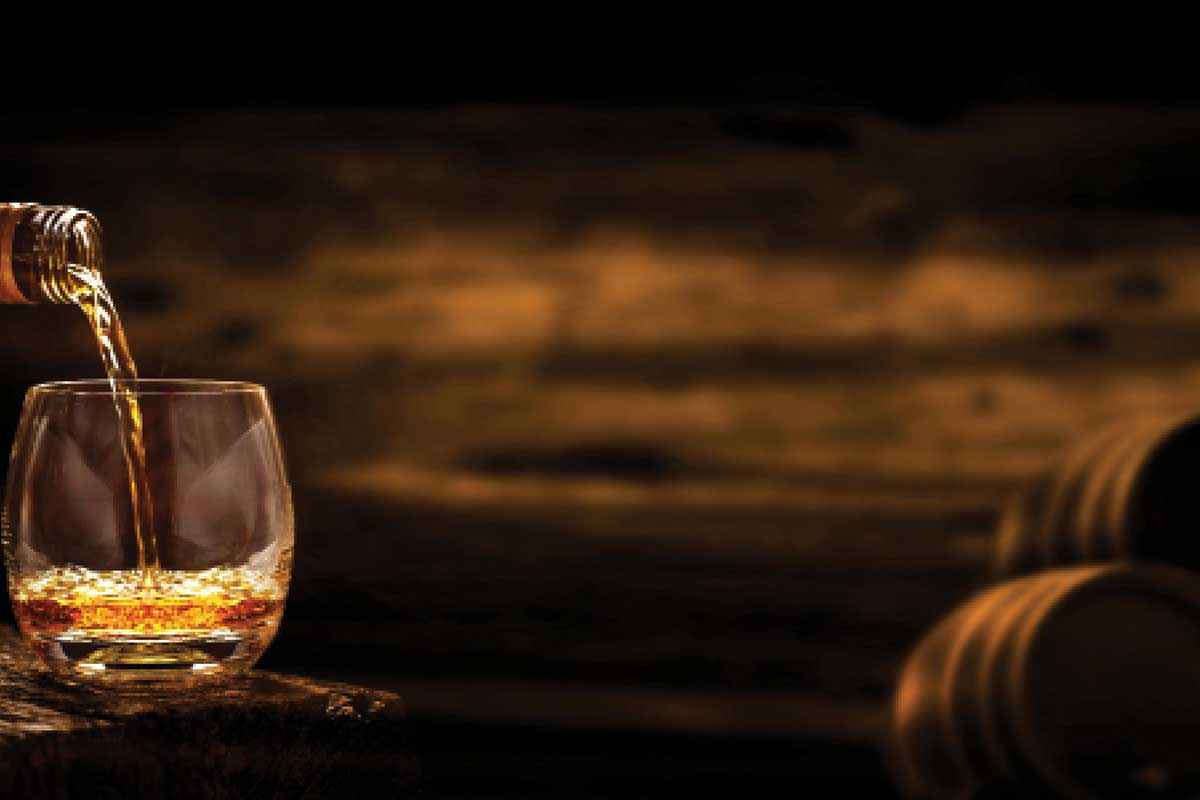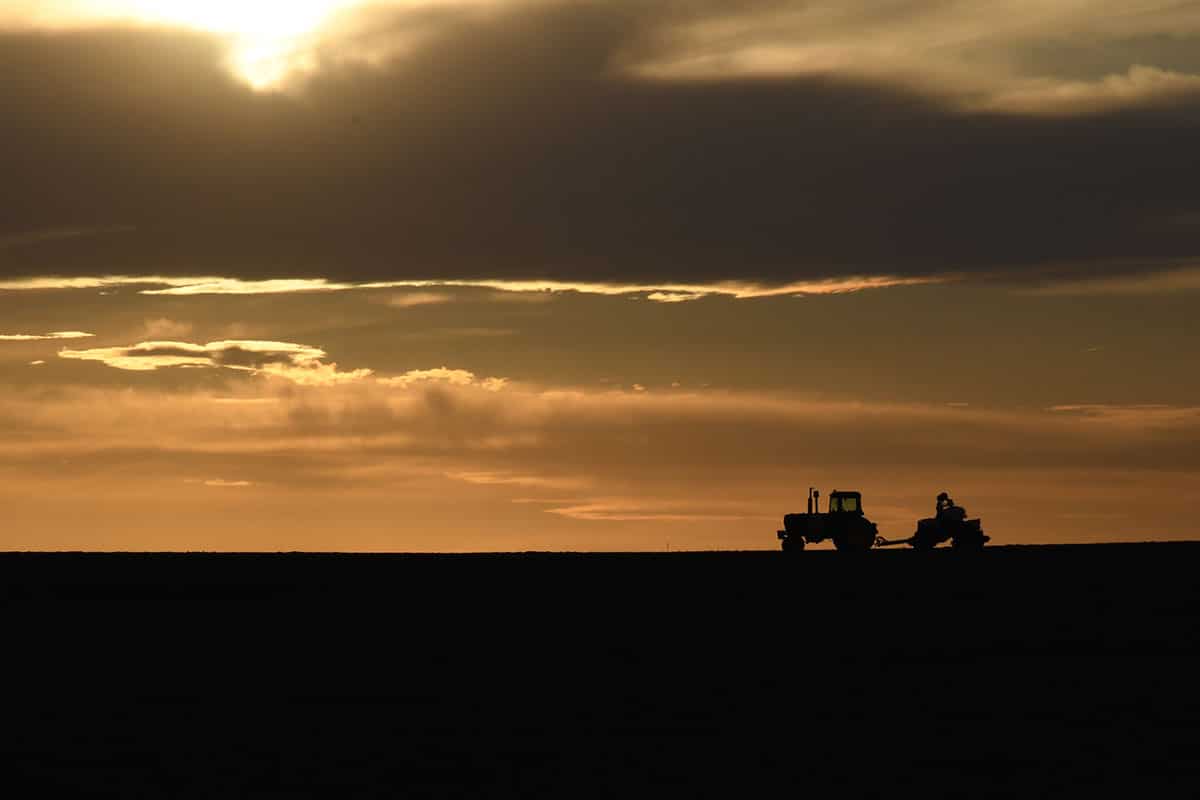One hundred years ago, the 18th Amendment set Prohibition in motion. For thirteen years, until its repeal in 1933, spirit seekers would visit back alleys and speakeasies to get their fix. It was during this time that the first iteration of the cocktail movement began.
The banned bootleg spirits of the day didn’t exactly go down smoothly. Using industrial denatured alcohol, which had to be cleaned of toxic chemicals, some moonshiners mixed in creosote for a scotch flavor, dead rats for bourbon, or juniper oil for gin, according to Drink: A Cultural History of Alcohol. Suffice it to say, the liquid needed a little something to make it palatable. Some simple syrup, juice, or fruit eased the spirits’ stiff nature.
Over the years, the cocktail movement has ebbed and flowed, giving rise to the popularity of well-crafted spirits like whiskey, gin, vodka, and rum. In the last five years, the Missouri craft distillers industry has experienced steady growth, and the most recent data reflects fifty-five active craft distilleries, according to the American Craft Spirits Association (ACSA).
“People’s tastes go through changes and what they experiment with,” says Missouri Craft Distillers Guild (MCDG) President Don Gosen, owner and distiller at Copper Mule in Hermann. “Right now, cocktails are quite a hit. In the bourbon and whiskey industry, even gin and tequilas, there is a solid base of that, but what’s driving it now is the cocktail movement.”

In the last couple of decades, the cocktail movement has seen a resurgence, and Missourians with a passion for distilling have risen to the challenge. “Romantically, in this day and age of instant gratification, instant messaging, whiskey in particular and spirits are something that just can’t be rushed. There’s a little bit of nostalgia for that,” says David Weglarz, owner and distiller at StilL630 in St. Louis and MCDG immediate past-president. According to the most recent Craft Spirits Data Project, published by the ACSA, 2020 looked to be another banner year for the craft distillery industry across the country and in Missouri. After COVID-19 hit earlier this year, however, there was uncertainty at the national level.
“Our membership—much like our colleagues in hospitality—is grieving, and our community of craft distilleries are facing a potential industry-wide collapse,” says Margie A. S. Lehrman, CEO of ACSA. “And even in the face of all of this, we continue to hear of selfless stories of our industry rallying to support their communities at home, many of whom are pivoting to produce hand sanitizer during the global shortage.” Some Missouri distilleries, like J Rieger and Dogmaster Distillery, accepted that challenge while others could not.
Every distillery has different rules when it comes to quantity and cost during tastings. Call ahead so you’re not surprised by price, amount, or tour availability. —Don Gosen, Copper Mule, Hermann
At Pinckney Bend Distillery in New Haven, the management chose not to produce hand sanitizer. “It’s a lot more complicated than the headlines are making it,” Pinckney Bend Chief Operations Officer Tara Steffens says. “We have a lot of friends in the industrial alcohol side of things, and after talking with them, the best thing we could do is get out of their way. We are set up for flavoring. Hand sanitizer is an over-the-counter drug, and while they relaxed some of the approval and taxing, how you make it is something we are not equipped to do nor have access to several of the ingredients. We are helping in other ways behind the scenes and supporting those who are better equipped to produce it.”
The guild supported its members and encouraged them to do good and stay focused. Currently made up of thirty-two member distilleries, the young organization formed in 2018 is a nonprofit focused on promoting Missouri’s craft distilleries.
“The Missouri Craft Distillers Guild just keeps growing, and everybody’s doing something different,” Tara says. She sits on the MCDG board as treasurer. “The other thing that’s really nice about Missouri is the support and camaraderie. Everybody truly cares and supports what everybody is doing.”
Missouri’s Spirits Identity
Distillers across the state are producing everything from American-style gin to vodka to rum and whiskey. Edelbrand Pure Distilling in Marthasville is making Swiss-style vinars (fruit brandies). Restless Spirits in Kansas City is producing an Irish-style single malt whiskey. J. Rieger & Co.’s Kansas City Whiskey is a whiskey blend with sherry. While traditional spirits are a large share of production, there also exists a significant suite of creative craft spirits.
David at StilL630 has a knack, of sorts, for it. When he began distilling spirits in 2012, he started with whiskies. Today, he has a botanical library with more than 250 different roots, fruits, herbs, leaves, seeds, flowers, peppers, and nuts that allow him to hone the palette and build and create new spirits. He admits he is a bit selfish when it comes to what he distills: whiskies, gins, a little bit of rum, maybe an occasional brandy. No vodka.
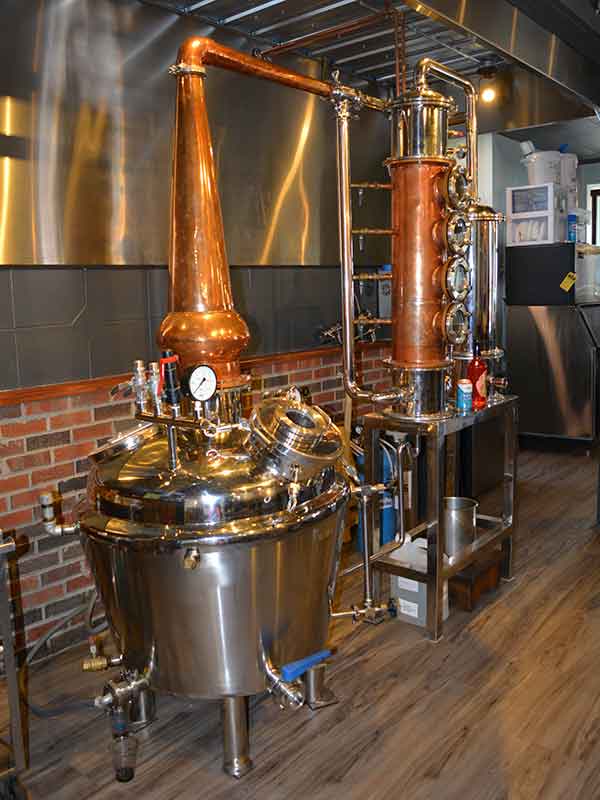
“That’s what I like, and dammit, I’m in charge,” he says with a laugh. “It started off just as personal preference, but it has kind of grown into more philosophical things. It’s a point of differentiation too. We’re not trying to play the flavoring game where we just put this flavor in or dragon berry or cupcake or whatever; we’re trying to make authentic spirits from local ingredients that are really great.”
One of StilL630’s limited releases in 2017, Presence of Darkness, a peanut butter chocolate milk stout, had such a cult following, the distillery set a new batch in 2018 that will come out later this year if everything goes as planned.
During the 1990s, people weren’t ready for that kind of experimentation. Don spent twenty years as a craft brewer before leaving that industry and becoming a distiller a little over a year ago. He holds licenses in distilling, brewing, and wine-making. As a brewer, he experimented with putting beer in whiskey barrels.
“Nobody drank it, and we ended up dumping it,” he says. “Today, that would go for twenty dollars a glass, but back then, people weren’t ready for it yet.”
Sometimes it works out; sometimes it doesn’t.
Experimentation aside, classic well-crafted spirits are making a name for themselves as well. After Pinckney Bend Distilling sold its first bottles of American Gin out of the back of a van in late 2011, the three friends who established the small business entered their gin into the San Francisco World Spirits Competition the next year. It received a gold medal.
“It was sheer naiveté to think that we would win gold our first time,” Tara says. “I think that we just thought it was fun. We got gold alongside people who have been doing it 180 years. It certainly was validating, but I don’t think any of us really thought a gold medal was going to come home.”
Tara says it’s just as fun and exciting as it looks. For her and the next generation to run the company, the learning process has been steep at times, but the combined skill set of the team brought the game plan together. Keith Meyer, a son of one of the founding partners of Pinckney Bend, and Tara keep the business going along with three other team members.
Embrace the experience each distillery offers. Each distillery is as unique as our spirits, so being open to how each distillery shares that is important. The joy of a small distillery is you very well could have the master distiller giving your tasting. Being open to what they share and being able to take advantage of their passion can only enhance your experience with that distillery. —Tara Steffens, Pinckney Bend Distillery, New Haven
A Whiskey of Our Own
A year ago, Missouri distillers received news that officially gave those that make whiskey in the state a unique identity to share. House Bill 266 passed and set the standards by which Missouri Bourbon Whiskey would be made. Missouri Bourbon Whiskey must be fermented, distilled, aged, and bottled in Missouri. Furthermore, the barrels in which it ages must be made of Missouri oak and manufactured in the state, and the whiskey must be made with corn grown in our state.
“It’s the most restrictive law on the books anywhere,” David says. “It benefits Missouri, but what it also does is highlight the top quality of barrels that come from here. The white oak in Missouri is the premier wood for barrel-making anywhere in the world.”
To give it more perspective, Don points out, “Kentucky bourbon is world-famous bourbon, but it’s made in Missouri barrels.”
Whiskey takes time to age, but even so, some Missouri distillers already have Missouri Bourbon Whiskey available. They were producing their whiskey using the new state guidelines before the legislation passed.
“It’s a cool idea, and it’s a cool story now,” David says, “but what’s going to be incredible is—over the next few years when you start to see more of these longer-term versions come out—that’s when we’ll really establish it as a benchmark for top quality. Myself and a lot of other distillers in the guild already have whiskey that would qualify as Missouri Bourbon Whiskey. We’ve been doing this for a while.”
A Distillery Expedition
To open the doors again, distilleries are facing hard questions about how to logistically reincorporate foot traffic to their places of business.
“The distillery itself is open and producing so that’s been wonderful,” Tara says of Pinckney Bend. “The tasting room reopening is going to be hard as our space is extremely limited. We are currently discussing options and long-term plans. We know the tasting room experience we offer will take a while to get back online, but we are committed to keeping the integrity of that experience intact the best we can.”
In 2019, before social distance and other safety measures like using gloves during tastings were a part of the process, the guild established the Missouri Spirits Expedition to increase the visibility of its members and to expose visitors to spirits being made in the state. Those plans haven’t changed, but guild members suggest calling ahead or visiting websites prior to travel.
On the expedition, spirit seekers can visit the thirty-two featured locations and gather stamps to qualify for prizes. Guild members recommend taking your time, as you should with enjoying good whiskey. There isn’t a deadline. Available at participating distilleries, a completed expedition map will get you a bottle of Missouri Bourbon Whiskey you can’t get anywhere else. It’s a blend of bourbons from distilleries across the state. To date, only four people have completed the tour, all from out of state. For the time being, the title of first Missourian to complete the expedition remains unclaimed.
Getting Drinks
Short of tasting room sales, local restaurants, bars, and liquor stores are some of the biggest customers of Missouri’s craft distilled spirits. They are among the distribution mix that make up 50 percent of in-state sales for all craft distilleries. For smaller distilleries, more than 90 percent of sales happen within the state.
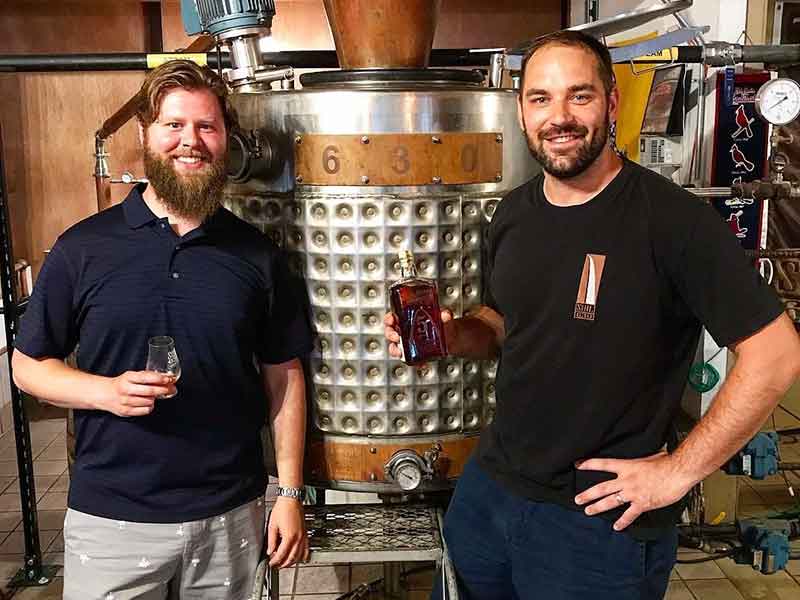
“Local anything is coming into its own. People are really wanting to embrace the idea of making their own products and using stuff that is from around here,” says Frances Harvey, a ten-year bar veteran and bartender at Barred Owl Butcher & Table in Columbia. “That is definitely a trend that every place is going toward, but I think that there’s also just a want from the community.”
When a new customer bellies up to Frances’s bar looking for an adventure, she asks a few questions about flavor preferences first, then selects a signature cocktail based on the answers. If they say citrus or sweet, they may get a Sunshine Soda that features a spirit of choice plus an assortment of citrus juices, a little honey, and some club soda. The Cold Black Heart is the most popular cocktail at Barred Owl, she says; it’s a spicy grapefruit libation, using vodka spiced in-house. The regular clientele is known for requesting locally made spirits.
“We’re always going to carry Reiger’s,” Frances says. “We’re always going to carry DogMaster because it’s a local thing, and we want to support it. It’s part of our ethos to bring up the people that are in our community.”
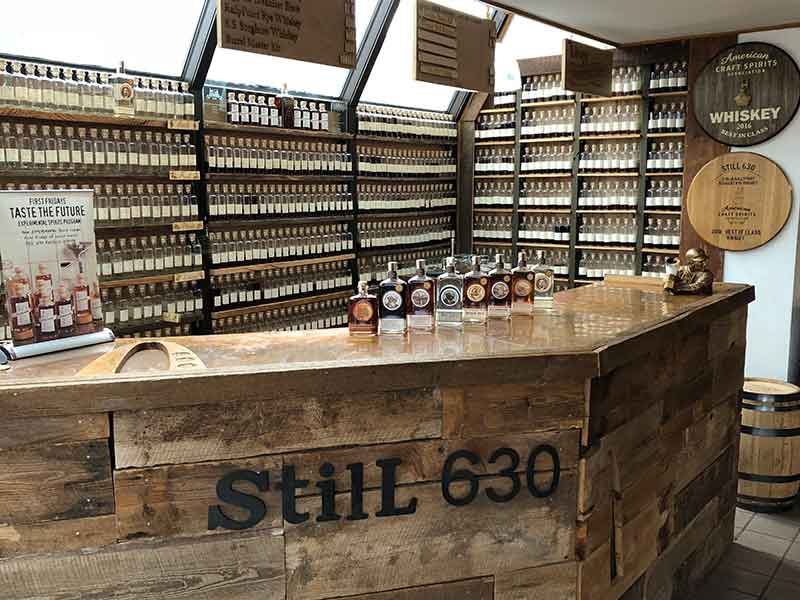
David agrees that the local movement is another driving force behind the momentum Missouri’s craft distilleries are experiencing. “It’s a natural progression of our consumer climate. Generationally speaking, we’re sick of the corporate chain. When I visit another city as David Weglarz, and I’m going out to restaurants, I want to try something that’s unique, that’s local, that has a story behind it.”
Be open-minded. All craft distilleries have their own unique character and personality. Just because you love a spirit at one place doesn’t mean you will love or hate that same type of spirit at another. There is a distillery in Missouri right now making a spirit that you will love; you just might not have found it yet. —David Weglarz, StilL630, St. Louis
Crafting Cocktails
In the spirit of adventure, here are a few recipes to try from the distillers and bartenders who know them best.
FloraDora
Tara Steffens, Pinckney Bend Distillery
1 ½ ounces American navy strength gin
½ ounce fresh lime juice
½ ounce raspberry liqueur
(Chambord, creme de framboise)
4–6 ounces ginger ale
> Pour gin, lime juice, and raspberry liqueur into a highball glass filled with ice. Stir gently. Top with ginger ale. For more ginger kick, add a few dashes of cocktail bitters.
Mommy’s Little Helper
David Weglarz, StiL630
1 ½ ounces American navy strength gin
2 ounces peach juice
½ ounce lemon juice
2–3 basil leaves
> Combine all ingredients in a cocktail shaker and shake together. Strain over ice and top with lemon-lime citrus soda.
Fresh Summer Spritz
Frances Harvey, Barred Owl Butcher & Table
2 ounces Rieger’s Kansas City Gin
¾ ounce simple syrup
½ ounce lime juice
6–8 fresh mint leaves
Club soda
> Slap mint and toss into the bottom of a shaker tin. Along with some ice, add all ingredients except the club soda to the tin. Shake until the tin is cold. Pour the contents into a tall glass and top with club soda. Garnish with mint leaf and enjoy on a back deck or with your feet in a cold Missouri spring.
Related Posts
This is Our Missouri
A photo project helps commemorate the bicentennial.
The Craft of Pipe Making
Learn how Missouri Meerschaum makes the beloved corn cob pipes that Washington, Missouri is known for.

